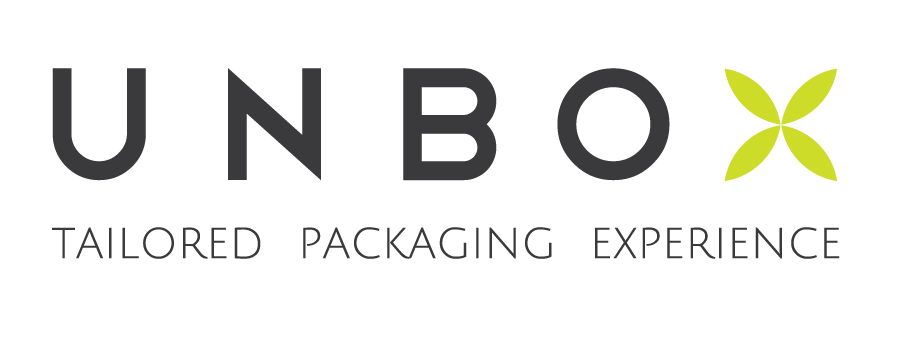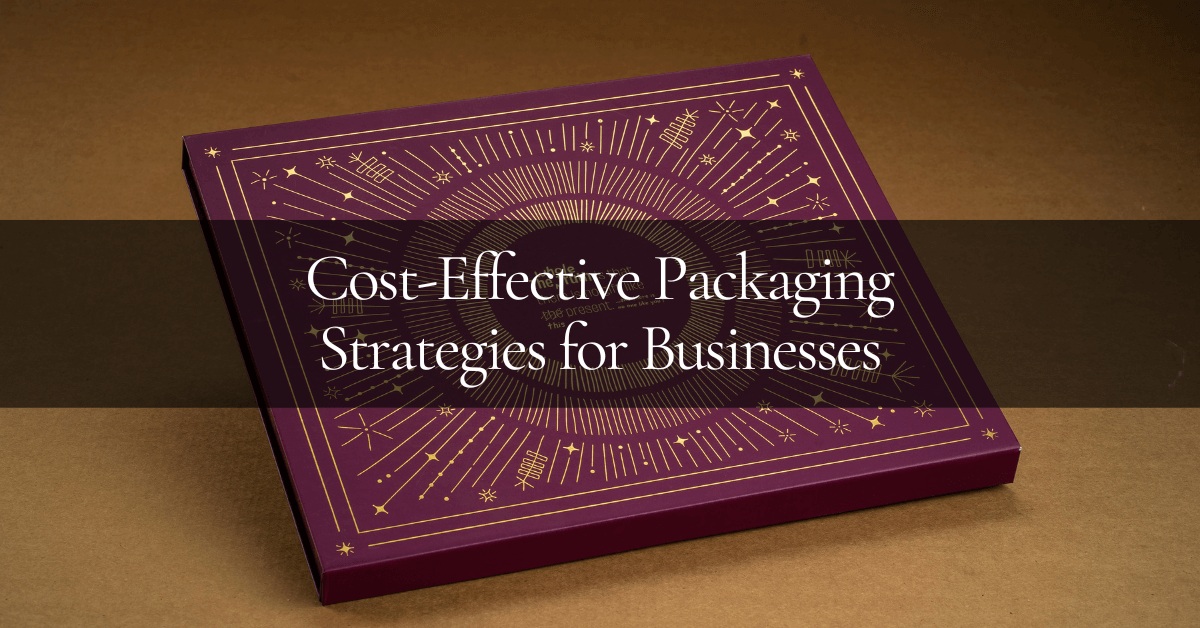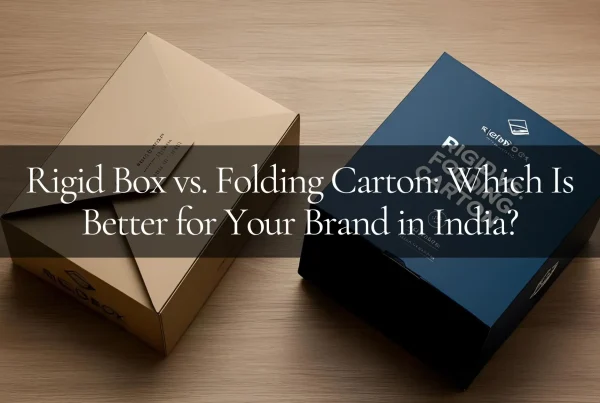In today’s competitive business landscape, cost-effective packaging strategies have become essential for businesses looking to succeed in the market. Packaging plays a crucial role in attracting customers, protecting products, and creating a memorable brand image.
By implementing effective strategies, businesses can not only reduce costs but also improve customer satisfaction and boost their bottom line.
In this article, we will explore the importance of cost-effective packaging, the key elements of packaging strategies, how to implement them, and the latest innovations and challenges in this dynamic field.
Understanding the Importance of Cost-Effective Packaging

Before diving into the details of cost-effective packaging strategies, it is crucial to understand the role packaging plays in business. Packaging goes beyond simply enclosing products; it serves as a marketing tool, a means of protection, and a reflection of the brand’s values.
Effective packaging can communicate key messages, create a positive customer experience, and differentiate products from competitors. With consumers becoming increasingly conscious of sustainability and cost, cost-effective packaging becomes even more critical.
When it comes to packaging, businesses must consider various factors to ensure its effectiveness. One of the primary roles of packaging is to protect products during transportation and storage.
By using sturdy materials and innovative designs, businesses can minimize the risk of damage or spoilage. This not only saves them money by reducing product losses but also ensures that customers receive their purchases in pristine condition.
However, packaging is not solely about protection. It is also a powerful marketing tool that can attract customers and influence their purchasing decisions. The design, colors, and overall aesthetics of the packaging can create a strong visual impact, catching the attention of potential buyers.
Additionally, packaging can communicate the product’s benefits and unique selling points, helping consumers understand why they should choose it over alternatives.
Moreover, packaging plays a crucial role in enhancing the perceived value of a product. By using high-quality materials and incorporating elegant designs, businesses can create a sense of luxury and exclusivity.
This perception of value can significantly influence customers’ willingness to pay a premium price for the product.
The Role of Packaging in Business

Packaging serves a multitude of purposes for businesses. Firstly, it protects products during transportation and storage, minimizing the risk of damage or spoilage.
Secondly, it acts as a powerful marketing tool, attracting customers and communicating the product’s benefits and unique selling points.
Additionally, packaging can enhance the perceived value of a product, influencing purchasing decisions. Lastly, it provides valuable information about the product, such as ingredients, usage instructions, and safety warnings.
Furthermore, packaging serves as a tangible representation of a brand’s values and identity. It is an opportunity for businesses to showcase their commitment to sustainability, social responsibility, or innovation.
By using eco-friendly materials or adopting sustainable packaging practices, companies can align their packaging with the values of environmentally conscious consumers.
Another crucial aspect of packaging is the information it provides to consumers. Packaging serves as a platform to communicate important details about the product, such as ingredients, usage instructions, and safety warnings.
This information helps customers make informed decisions and ensures their safety and satisfaction with the product.
Benefits of Cost-Effective Packaging
Cost-effective packaging strategies offer numerous benefits, ranging from reducing expenses to improving sustainability. By optimizing packaging design, materials, and processes, businesses can lower production costs, storage costs, and transportation costs.
This, in turn, allows them to remain competitive and allocate resources to other areas of the business.
Moreover, cost-effective packaging often involves using sustainable materials and practices. As consumers become more environmentally conscious, they are increasingly drawn to products that align with their values.
By adopting cost-effective packaging strategies that prioritize sustainability, businesses can attract these consumers and build a positive brand image.
Cost-effective packaging also contributes to waste reduction and resource conservation. By minimizing the use of excess materials and optimizing packaging sizes, businesses can reduce their environmental footprint.
This not only benefits the planet but also reduces costs associated with waste disposal and recycling.
In conclusion, packaging plays a vital role in business, serving as a means of protection, a marketing tool, and a reflection of a brand’s values. Cost-effective packaging strategies offer numerous benefits, including reduced expenses and improved sustainability.
By understanding the importance of cost-effective packaging and implementing effective strategies, businesses can enhance their competitiveness, attract environmentally conscious consumers, and communicate their brand’s values effectively.
Also Read: The Importance of Packaging in Business
Key Elements of Cost-Effective Packaging Strategies
 Achieving cost-effective packaging requires careful consideration of several key elements. These elements encompass material selection and sustainability, design and branding considerations, as well as size and weight optimization.
Achieving cost-effective packaging requires careful consideration of several key elements. These elements encompass material selection and sustainability, design and branding considerations, as well as size and weight optimization.
When it comes to cost-effective packaging, businesses need to pay close attention to the materials they choose. It’s essential to strike a balance between durability, cost, and sustainability.
Opting for materials that are recycled or biodegradable can greatly reduce the overall environmental impact of packaging. Not only does this benefit the planet, but it also aligns with the growing consumer demand for eco-friendly products.
Furthermore, optimizing package sizes and shapes can have a significant impact on cost-effectiveness. By carefully analyzing the dimensions of the packaging, businesses can minimize waste and transportation costs.
This means that less space is wasted during shipping, resulting in more efficient use of resources and reduced expenses. The design of packaging plays a crucial role in attracting consumers and communicating the brand’s values. It should be visually appealing, informative, and recognizable.
Cost-effective packaging strategies focus on creating designs that are not only aesthetically pleasing but also practical and cost-efficient to produce. By streamlining the design process and eliminating unnecessary elements, businesses can save both time and money.
Another vital element of cost-effective packaging is optimizing package sizes and weights. Excess packaging not only adds unnecessary costs but also contributes to environmental waste. By reducing the amount of material used in packaging, businesses can save on material costs and transportation expenses.
Additionally, lightweight packaging can lead to significant fuel savings during transportation, further reducing the environmental impact. It’s worth noting that cost-effective packaging strategies should not compromise the quality or safety of the product.
While it’s important to find ways to reduce costs, businesses must ensure that the packaging adequately protects the product during transit and storage. This means striking a delicate balance between cost efficiency and product integrity.
In conclusion, achieving cost-effective packaging involves careful consideration of material selection and sustainability, design and branding considerations, as well as size and weight optimization.
By prioritizing these key elements, businesses can create packaging solutions that are not only cost-effective but also environmentally friendly and visually appealing.
Implementing Cost-Effective Packaging Strategies
 Implementing cost-effective packaging strategies requires a systematic approach and careful planning. Businesses can follow these steps to develop a packaging strategy that balances cost and quality.
Implementing cost-effective packaging strategies requires a systematic approach and careful planning. Businesses can follow these steps to develop a packaging strategy that balances cost and quality.
Steps to Develop a Packaging Strategy
- Assess the current packaging processes and costs
- Set clear packaging goals, considering cost, sustainability, and customer satisfaction
- Collaborate with packaging experts or consultants
- Research and select suitable packaging materials and technologies
- Test and refine packaging prototypes
- Train staff members on the new packaging processes
- Continuously monitor and measure the effectiveness of the packaging strategy
Balancing Cost and Quality in Packaging
One of the challenges businesses face when implementing cost-effective packaging strategies is finding the right balance between cost and quality. While it is essential to reduce expenses, it is equally important to maintain product integrity and customer satisfaction.
Collaborating with packaging experts can help businesses strike this balance by identifying cost-saving opportunities while ensuring the packaging meets quality standards.
Innovations in Cost-Effective Packaging
 Innovation in packaging technology continues to revolutionize the industry. These advancements offer businesses new avenues to achieve cost-effectiveness while enhancing product protection and appeal.
Innovation in packaging technology continues to revolutionize the industry. These advancements offer businesses new avenues to achieve cost-effectiveness while enhancing product protection and appeal.
Also Read: Explore Top Sustainable Packaging Trends in 2023
Technological Advances in Packaging
With the introduction of smart packaging and automation, businesses can streamline their packaging processes and reduce costs. Smart packaging technologies, such as RFID tags and sensors, enable tracking and monitoring throughout the supply chain, reducing the risk of errors and improving efficiency.
Automation, on the other hand, allows for faster and more accurate packaging, minimizing labor costs and improving productivity.
Future Trends in Cost-Effective Packaging
Looking ahead, several trends are expected to shape the future of cost-effective packaging. These include the increased use of sustainable materials, the rise of biodegradable and compostable packaging, and the integration of eco-friendly packaging into brand identities.
Additionally, advancements in 3D printing technology have the potential to revolutionize packaging design and production, allowing for more customized and efficient solutions.
Overcoming Challenges in Cost-Effective Packaging
While cost-effective packaging offers numerous advantages, it also presents challenges that businesses must address to ensure success.
Dealing with Supply Chain Issues
Managing the supply chain effectively is crucial in achieving cost-effective packaging. Businesses need to collaborate closely with suppliers and logistics partners to ensure the timely and cost-efficient delivery of packaging materials. By optimizing the supply chain, businesses can minimize costs and reduce waste.
Navigating Regulatory Compliance in Packaging
The packaging industry is subject to extensive regulations aimed at ensuring consumer safety and environmental sustainability. Businesses must stay up to date with these regulations and ensure compliance to avoid potential penalties and reputational damage.
Partnering with packaging experts can help navigate these complexities, ensuring that packaging designs and materials are compliant with relevant regulations.
In conclusion, cost-effective packaging strategies are essential for businesses looking to thrive in the competitive market. By understanding the importance of packaging, focusing on key elements such as material selection, design, and optimization, and implementing strategies effectively, businesses can lower costs, improve sustainability, and enhance their overall success.
Embracing innovation and addressing challenges in cost-effective packaging will further position businesses as leaders in their industries, while creating a positive customer experience. In the future, continued advancements in technology and sustainability are expected to shape cost-effective packaging, offering businesses even more opportunities for success.
FAQs:
- What is the significance of cost-effective packaging in businesses?
Cost-effective packaging plays a pivotal role in businesses as it serves not just as a means of product protection, but also as a marketing tool and a representation of the brand’s values.
It helps in reducing costs, improving sustainability, and enhancing customer satisfaction, thereby boosting the business’s bottom line.
- How does packaging contribute to a business’s marketing strategy?
Packaging acts as a powerful marketing tool by attracting customers through its design, colors, and aesthetics.
It communicates the product’s benefits and unique selling points, differentiates it from competitors, and can even enhance the perceived value of a product.
- What are the key elements to consider in developing cost-effective packaging strategies?
The key elements include selecting sustainable and cost-efficient materials, optimizing design and branding, and ensuring the size and weight of the packaging are minimized to reduce waste and transportation costs, all while maintaining product quality and integrity.
- Can cost-effective packaging be environmentally friendly?
Yes, cost-effective packaging often involves using sustainable materials and practices.
This aligns with increasing consumer preference for eco-friendly products and helps in reducing environmental impact through waste reduction and resource conservation.
- What role does technology play in cost-effective packaging?
Technology, like smart packaging and automation, plays a crucial role. Smart technologies enable better tracking and efficiency in the supply chain, while automation enhances packaging speed and accuracy, reducing labor costs and increasing productivity.




